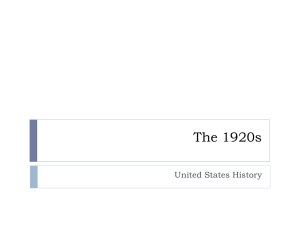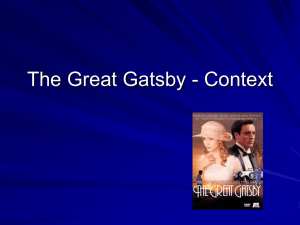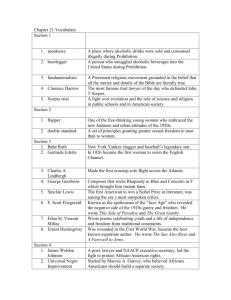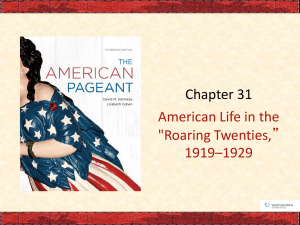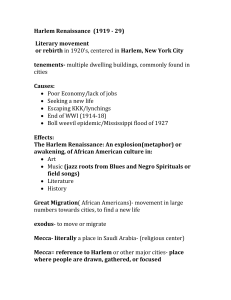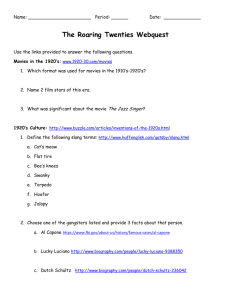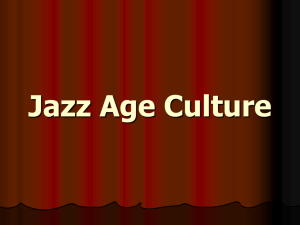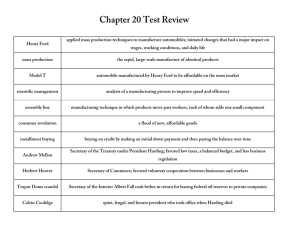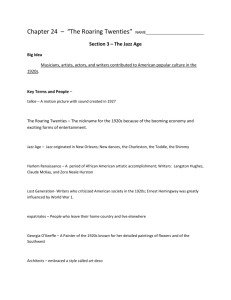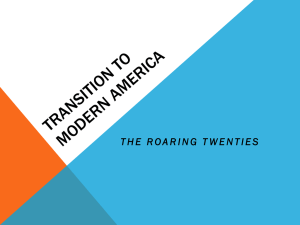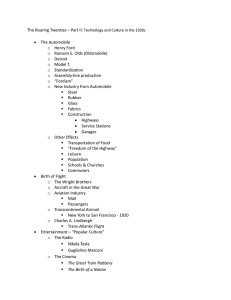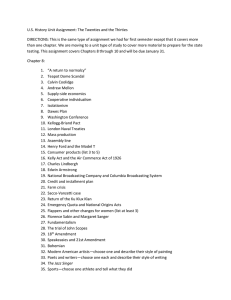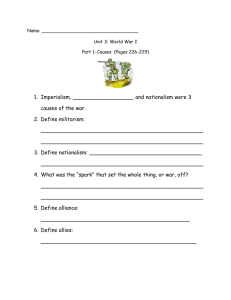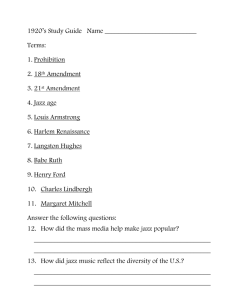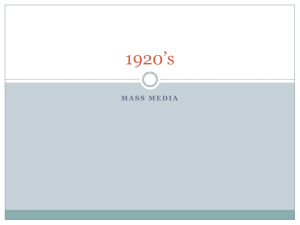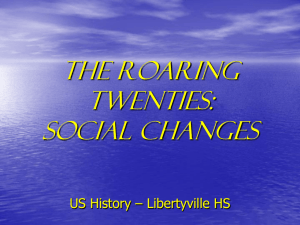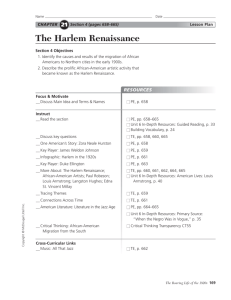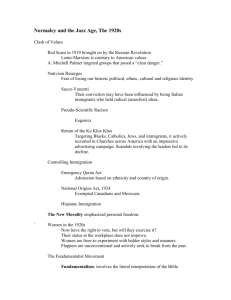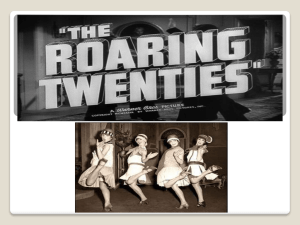Art in the 1920s - BlansetteUSHistory
advertisement
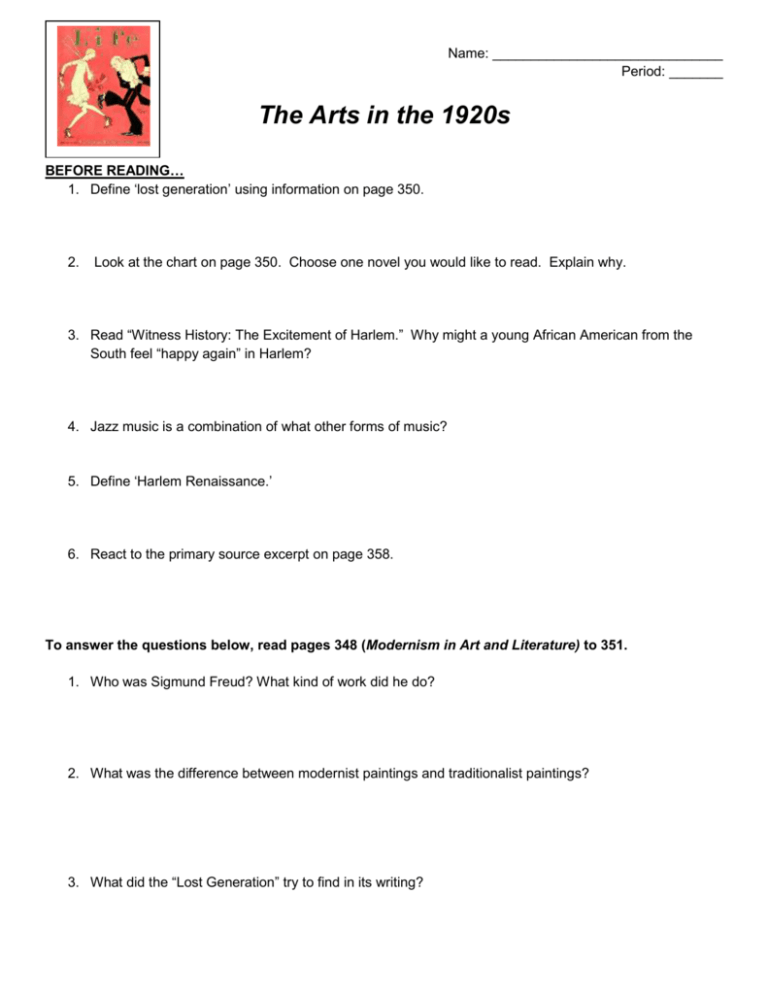
Name: ______________________________ Period: _______ The Arts in the 1920s BEFORE READING… 1. Define ‘lost generation’ using information on page 350. 2. Look at the chart on page 350. Choose one novel you would like to read. Explain why. 3. Read “Witness History: The Excitement of Harlem.” Why might a young African American from the South feel “happy again” in Harlem? 4. Jazz music is a combination of what other forms of music? 5. Define ‘Harlem Renaissance.’ 6. React to the primary source excerpt on page 358. To answer the questions below, read pages 348 (Modernism in Art and Literature) to 351. 1. Who was Sigmund Freud? What kind of work did he do? 2. What was the difference between modernist paintings and traditionalist paintings? 3. What did the “Lost Generation” try to find in its writing? 4. World War I shattered many Americans’ view of the world, making it seem cheap and flawed. During the 1920s, Americans needed a new kind of hero, and professional athletes fulfilled need. They offered a sense of hope - a sense of idealism - that people were capable of great feats and lofty dreams. How was the disillusionment of “Lost Generation” writers also a reaction to WWI? 5. Read the primary source quote from The Great Gatsby on page 350. How does it reflect other information you have learned so far about society in the 1920s? To answer the questions below, read pages 355 (The Jazz Age) to 358. 6. Where did Jazz music originate? How did it spread north? 7. How did Jazz quickly bridge the gap between the black and white races? 8. How do you think African Americans felt about the popularity of Jazz among whites? 9. Why do you think Jazz is important to American culture? 10. Explain the term “The New Negro.” 11. What was one lasting impact of the Harlem Renaissance?


